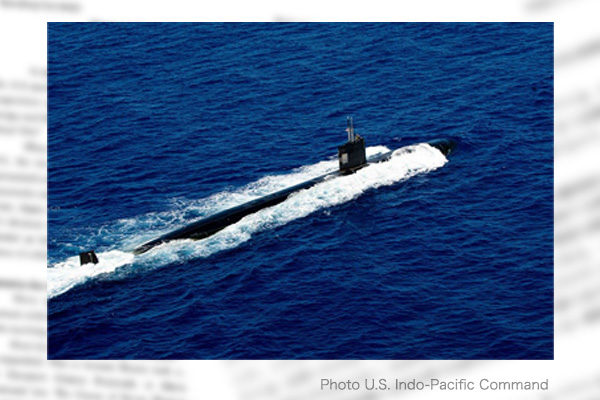On September 15, the United States, the United Kingdom and Australia announced a new security framework focusing on U.S. and U.K. technological cooperation in Australia’s building of nuclear-powered submarines. Japan cannot join the AUKUS framework named after the three countries, because it has no will to build nuclear submarines.
On the same day, South Korea successfully test-fired a submarine-launched ballistic missile. Japan has no intention of firing ballistic missiles from submarines, either. In the vicinity of Japan, South Korea and Taiwan as well as North Korea, China and Russia have begun to possess missiles with ranges exceeding 1,000 kilometers. Japan is the only country having no such missiles in Northeast Asia.
These are attributable to Japanese people’s allergies to nuclear and military powers. In nuclear and military fields, Japan has been left behind Australia and South Korea that have less population and gross domestic product (GDP) than Japan.
Rejection of nuclear power
In 1972, a minor radioactive leak from the Japanese nuclear-powered ship Mutsu during a test navigation got a lot of press coverage, leading the government to bury a marine nuclear reactor project. Such nuclear power allergy has shut the door on the development of nuclear engines for war ships including submarines.
The AUKUS framework has originated from the Five Eyes intelligence sharing framework that includes Canada and New Zealand in addition to the three AUKUS members. This framework still exists, but New Zealand’s refusal to accept a U.S. nuclear-powered ship’s port visit in 1985 led the other four’s framework to become important. When I served as the defense attaché at the Japanese Embassy in Washington, the Department of Defense handled “AUSCANUKUS Only” documents for the four countries, which we, Japanese officials were not allowed to see.
While the United States, the United Kingdom and Australia have launched the AUKUS framework for building nuclear submarines, Royal Military College of Canada in Kingston has realia for nuclear reactor, which National Defense Academy of Japan lacks.
Protectorate mentality abhorring military power
Meanwhile, on September 11 and 12, North Korea test-fired cruise missiles that reportedly flew 1,500 kilometers. Many media characterized these missiles as non-nuclear, but the missiles resemble U.S. Tomahawks, as far as we see published photos. Given that U.S. Tomahawks include those that can carry nuclear warheads, North Korean cruise missiles may also carry nuclear warheads someday.
North Korea has used a wheeled transporter-erector-launcher (TEL) for firing ballistic missiles that is too heavy to run on ordinary roads or bridges and thus has a limited range of movement. But North Korea used launchers built in a train to fire ballistic missiles on September 15, paving the way for launchers to expand their moving ranges. Furthermore, the latest ballistic missiles conducted an irregular maneuver in the atmosphere that would make it difficult for Japan’s current ballistic missile defense system to intercept incoming missiles.
At a debate on September 17 among the four candidates for the ruling Liberal Democratic Party’s presidential election, however, Seiko Noda still advocated “non-war” policy. Taro Kono branded any attacks on missile-launching sources as outdated and called for deterring war with the Japan-U.S. alliance. Theirs is protectorate mentality relying solely on the U.S. for Japan’s defense.
Fumio Ota is a senior fellow and a Planning Committee member at the Japan Institute for National Fundamentals. He is a retired Vice Admiral of Japan’s Maritime Self-Defense Force.


